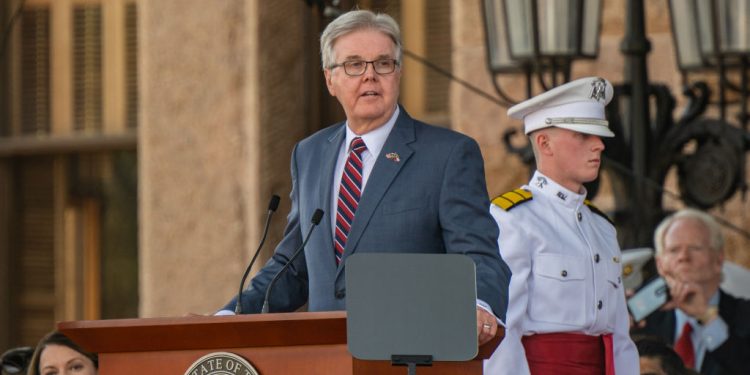Over a million Texas homes and businesses are still without power following Hurricane Beryl. The continued power outages combined with a severe heat wave across the western United States are adding to a public health crisis. Healthcare providers, especially in harder hit areas such as Houston, continue to try to keep up with high patient loads.
Beryl left millions without power after making landfall, causing a surge in patients entering ERs in search of care.
On July 11, acting Governor Dan Patrick and Texas Emergency Management Chief Nim Kidd provided an update on the state’s response to power outages and other recovery efforts.
During the news conference, Lt. Gov. Patrick discussed how emergency management was addressing the state’s hospital overflow, which included moving patients into a temporary field hospital in Houston’s major sports complex.
“Our hospitals were jammed because they could not release patients to homes without power, which means emergency rooms could not get rooms for patients. Ambulances were sitting out with patients waiting for hours and hours. We sent 25 ambulances and set up a 250-bed regional medical shelter at NRG arena,” said Patrick during the conference.
Further complicating the situation, the widespread power outages caused several freestanding emergency rooms and urgent cares to close, leading some hospitals to request people only visit ERs for emergencies.
“Many of our ERs have seen an increase in patient volume due to storm-related complaints, including heat exhaustion, heat stroke and carbon dioxide exposure,” HCA Houston Healthcare officials said in a statement. “We are also seeing many respiratory patients who need their oxygen tanks refilled. Due to this increased volume, we ask that people only visit our emergency rooms if they are truly in need of emergency medical attention.”
Local hospitals report that the majority of ER cases being seen are related to oxygen and dialysis needs.

Streamlining Patient Care
The adoption of telehealth is an option some healthcare providers are considering.
According to Josh Thompson, Founder & CEO of Impact Health USA & Impact Health University, the disruptions these hospitals are experiencing place an emphasis on implementing better systems, which allow for continuity of care during hospital power outages.
“The recent power outages affecting hospitals in Texas highlight a significant issue in healthcare infrastructure. As the CEO of Impact Health USA, I’ve observed the challenges that such disruptions bring, particularly in maintaining patient care and managing pharmacy delays caused by severe weather,” said Thompson.
“Power outages can severely disrupt hospital operations, leading to delays in critical treatments and patient care. Additionally, pharmacy delays due to weather can hinder timely access to medications, exacerbating patient conditions.”
Thompson notes that the future of healthcare is telehealth since it enables doctors and hospitals to bypass physical obstacles, ensuring that patients receive timely care and that healthcare providers can manage their workload more effectively, even under adverse conditions.
“The integration of telehealth into our healthcare system is crucial for building resilience against future disruptions. By adopting these innovative solutions, we can better prepare for emergencies and ensure that patient care remains uninterrupted, regardless of external circumstances.”






